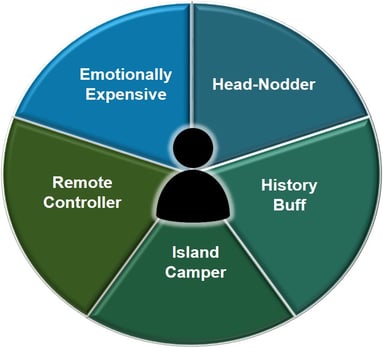Five Challenging Personalities, and How to Manage Them

The strategies for dealing with difficult people you encounter at work will differ according to these profiles, writes Joe Topinka.
Everyone interested in career development knows that we can all benefit from more leadership training. Typically these courses cover topics like performance evaluations, budgeting, and strategic planning. But one area that gets almost no attention is how to deal with the difficult people. We all face them every day in the office.
You know the type; the people who thwart progress, create anxiety, and disrupt teams. There’s one in every office.
I was talking with a group of IT executives recently and they remarked how little is done to define great leadership, and to teach leadership skills in early education – or even in the later years, for that matter. For many of us, our development as leaders was shaped by role models and mentors throughout our careers. For me, leadership started at home with my parents. Later, I was fortunate to find other leaders that willingly offered their insights and learnings with me.
Difficult people are commonplace, even outside of the office. I recently shared five difficult people personas with a group of IT executives and Business Relationship Managers in separate keynote speeches. The reaction I received was surprising. After both keynotes, people expressed relief that we were openly talking about these difficult people and the ways to handle them. It was like a therapy session for all of us.
5 Difficult Personas You Will Encounter
I have encountered five challenging personality types throughout my career. I have assembled the profile cards below to serve as a quick reference detailing each type: their behavior, how people typically react to them, and the methods you can use to succeed despite their conduct.
These folks seem to thrive on making people squirm and feel uncomfortable. The often like to push you off balance by trying to upset you. Try not to take the bait. Stick to the facts when dealing with these people. The facts will keep you safely above the fray. Thanks to Cy Wakeman for her insights into emotionally expensive people.
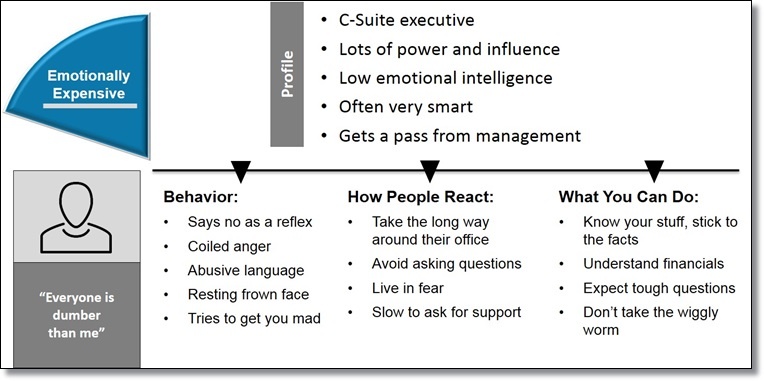
2. The Head-Nodder
It is great when people agree with you. It is also quite a letdown when you discover someone isn’t being honest with you. It is always a good idea to not overshare and it is especially true with head-nodders. Learn to ask them for commitment and accountability when you need their support on any initiatives. Most people are more likely to honor their commitments when specifically asked to.
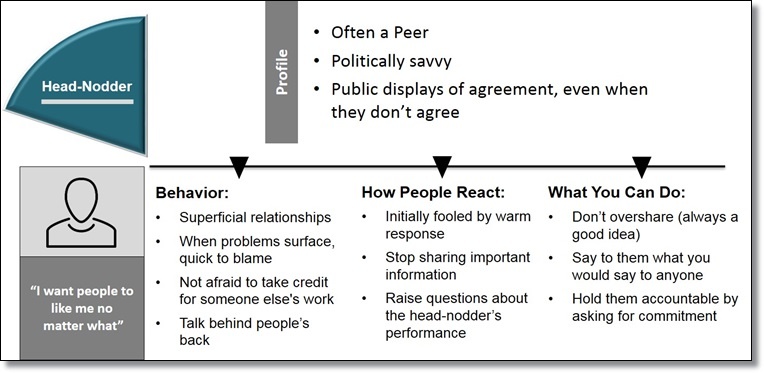
3. The History Buff
History can be a great teacher. In the office however, history buffs can get in the way by anchoring progress to the past. History buffs relish shutting down ideas that have been tried before. You can engage history buffs by asking them to give their best ideas for why past projects failed. Negative brainstorming (a.k.a. reverse thinking) is an effective way to get history buffs out of the past and into the future. Challenge them to turn things around having a beginner’s mind to overcome the roadblocks of the past.
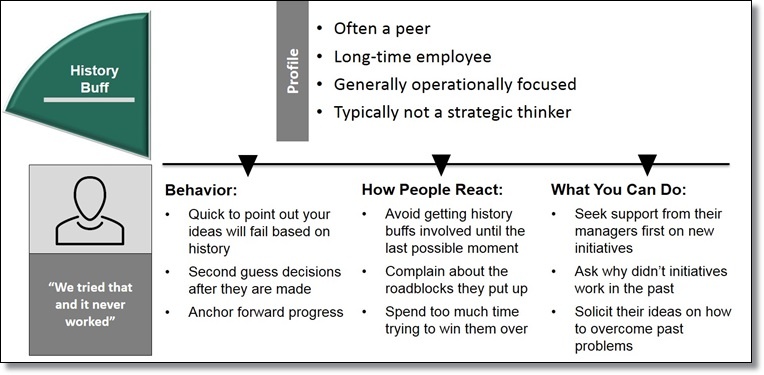
4. The Island Camper
In some ways, it is understandable when people become myopically focused on a goal. It is an issue however, when that goal isn’t as strategically important as other company initiatives. Island campers will often ignore company priorities if they get in the way of their own team or personal goals. They make every effort to consume as many resources as possible to serve their needs. While difficult, an honest conversation about company priorities and the impact of their behavior on bigger, broader company priorities can shake them loose from their tight grip.
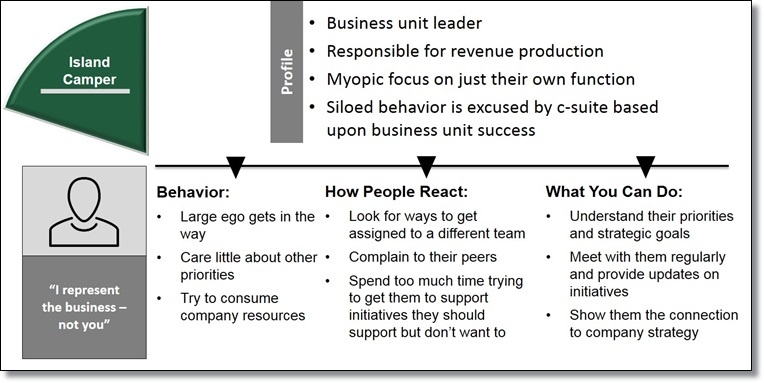
5. The Remote Controller
As it happens, some C-suite executives don’t like spending time in the office. Perhaps they live in a different state and avoid traveling to HQ whenever possible. At one such company the management team was quite frustrated by this. The head of marketing created a missing person milk carton graphic that made its way around the office, with the title, “Have you seen our CEO?”. Frustration and the lack of engagement were at a fever pitch.
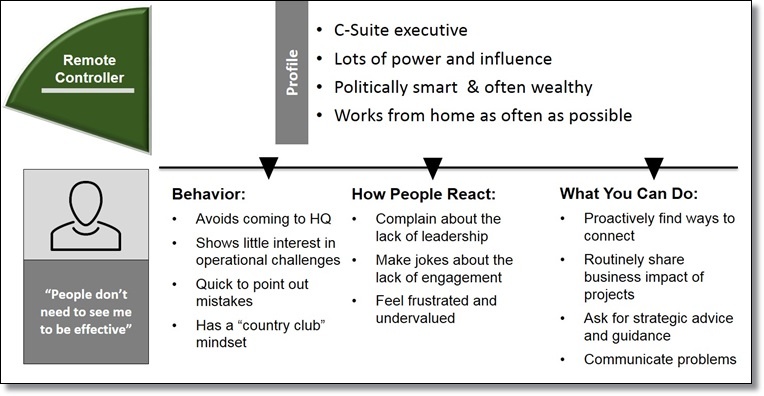
To overcome the absence of in-person engagement with such a boss, set up a routine cadence where you spend one-on-one time with them. Keep the meetings short and prepare your agenda items ahead of time. Be resilient and don’t lose your enthusiasm even if he or she cancels your meetings periodically.
Download PDF of all five cards
Every office has challenging people that we all must deal with: That is just our reality. It is easy to complain about office politics and people’s behavior. The truth is office politics and challenging people always have been, and always will be, a part of working life. There is no office on the planet where challenging personas aren’t a fact of professional life. The key to dealing with these dynamics is to take them head on.
Stick to the facts, resist the drama of challenging people, and proactively focus on business outcomes. Becoming an expert at this level of politics in the office is a necessity. The more skilled we become at rising above the drama of challenging people, the more success you and your company will have. Share your success stories and challenges with others and pass on your learnings. That will be your true leadership legacy.
Written by Joe Topinka
Joe Topinka is a recognized, game-changing CIO, executive coach, and published author. He is the founder of CIO Mentor, LLC and a Board Chair of the Business Relationship Management Institute (BRMI). Topinka is a three-time CIO of the Year award winner (Charlotte CIO Leadership Association, Charlotte Business Journal, Minneapolis / St. Paul Business Journal).

